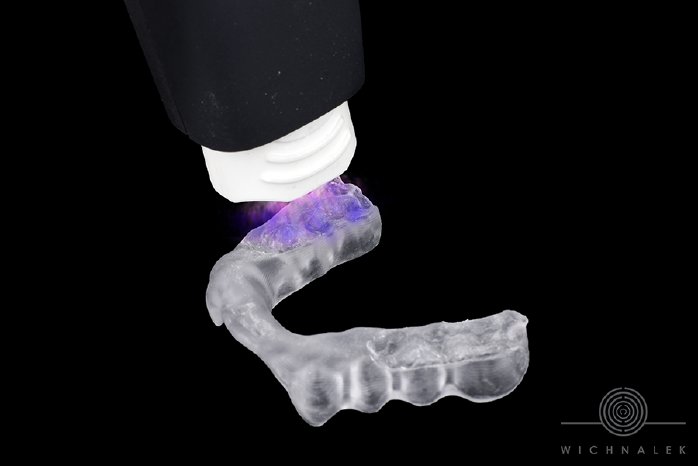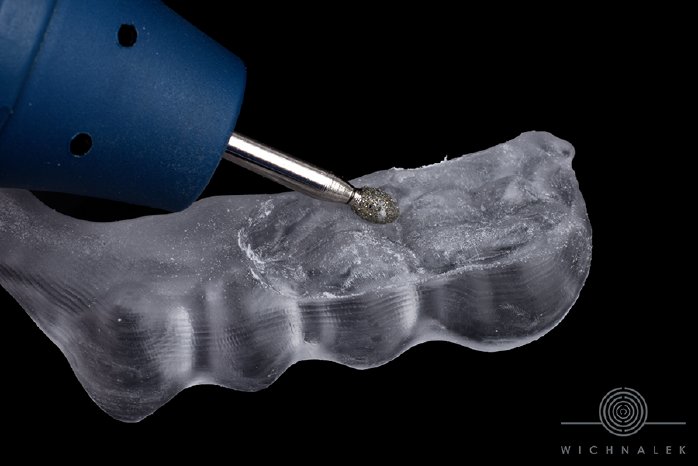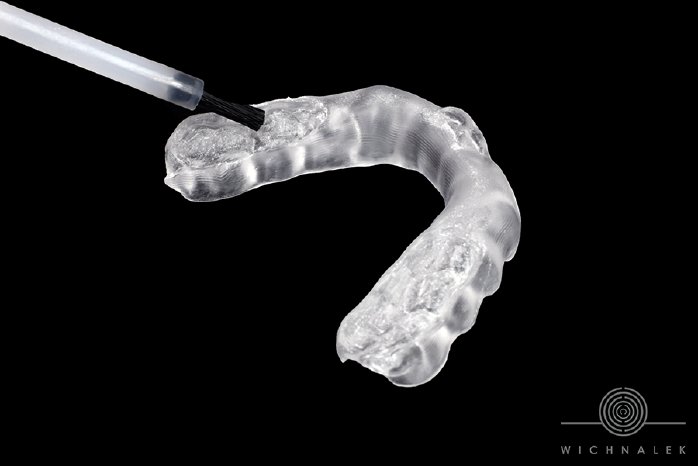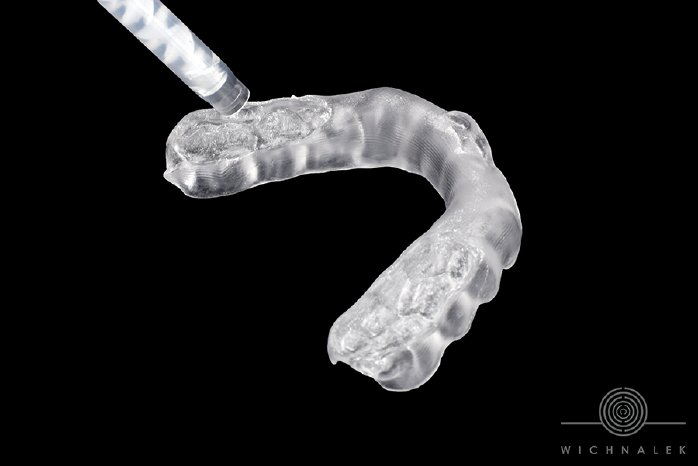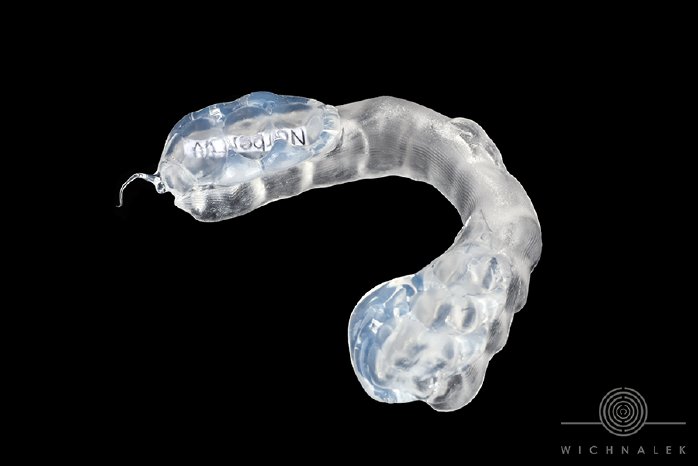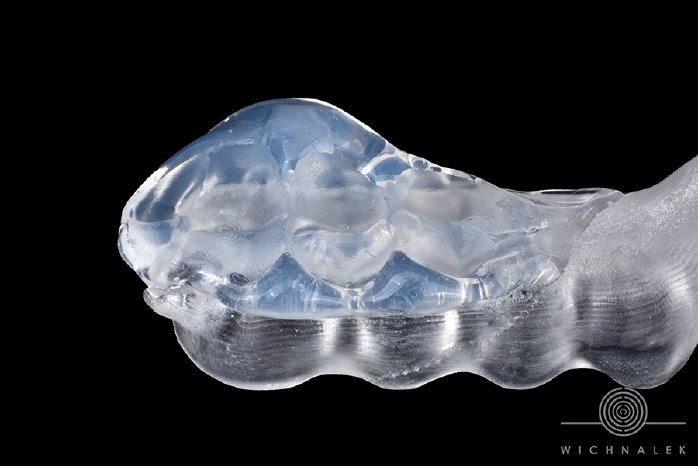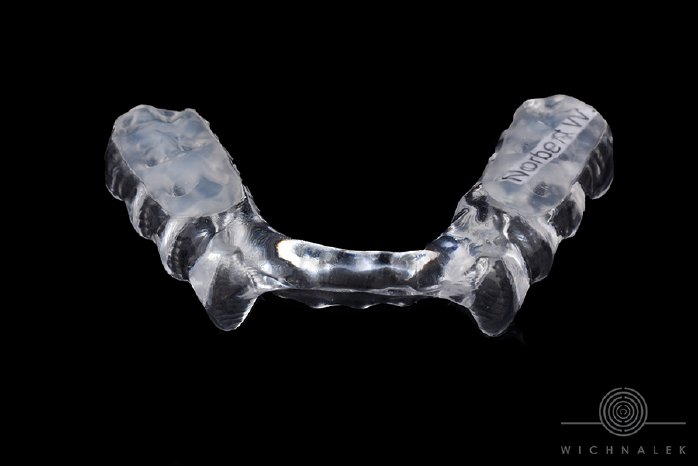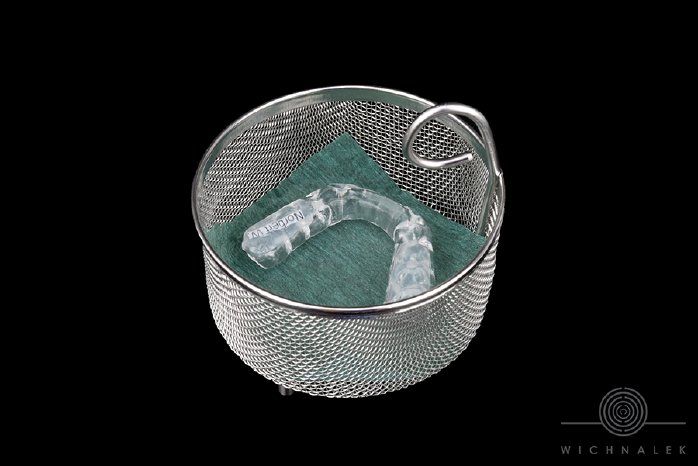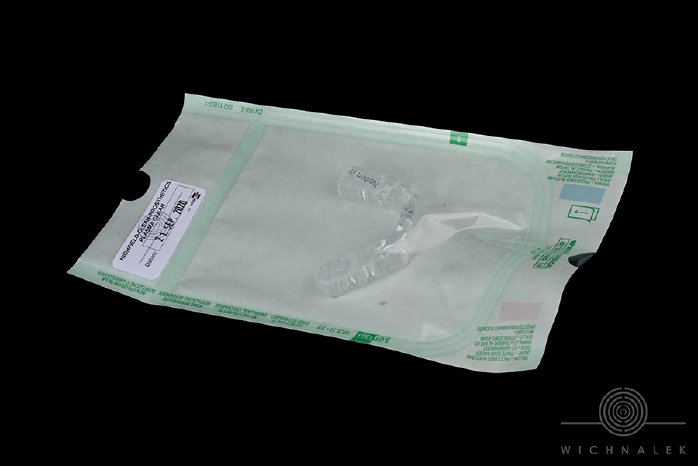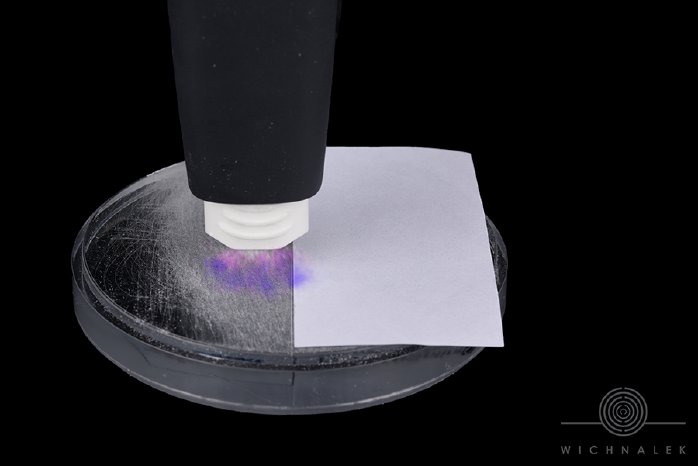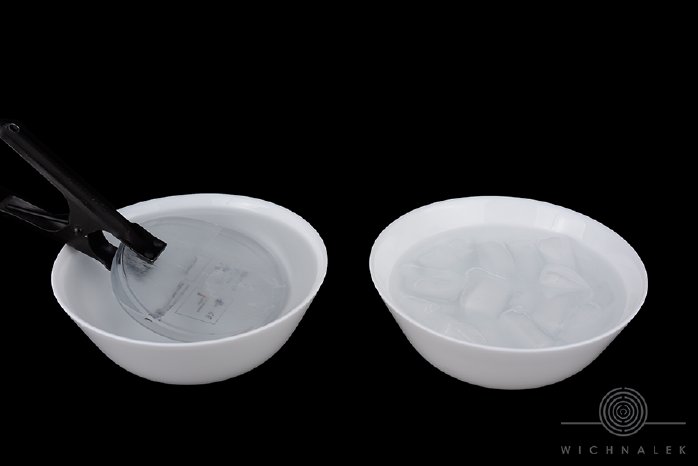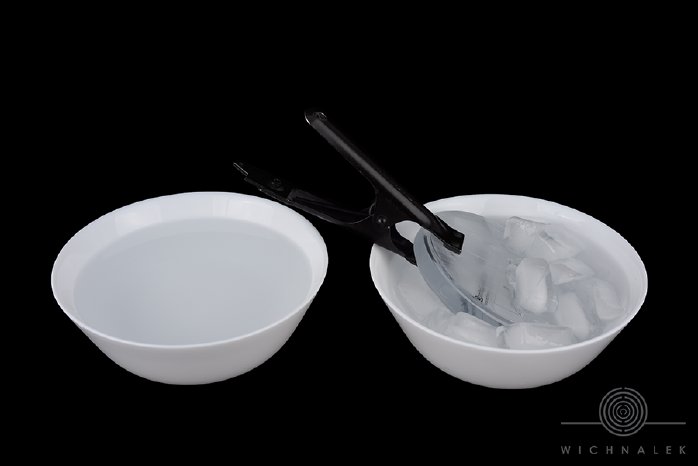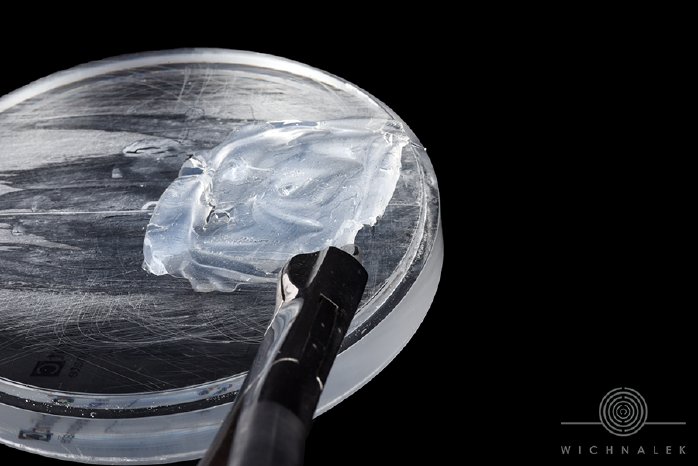Norbert Wichnalek pays special attention to the high quality of individual dental prostheses and their purity – this is where plasma technology comes into the picture: “In our laboratory, plasma technology has been in daily use for over 6 years. Plasma technology is unbeatable and efficient. For example, a treatment of only 30 seconds during the pre-treatment of the dental prosthesis before coating or bonding is sufficient to significantly improve the quality or to ensure the pore-deep final cleaning of all prosthetic work that leaves our laboratory”.
Plasma technology in the dental lab
The small and efficient plasma handheld device piezobrush® PZ3 from relyon plasma is one of the plasma technologies used in day-to-day applications. Here, cold atmospheric pressure plasma with a temperature of less than 50°C is used for the surface pre-treatment of the dental prosthesis. The pre-treatment activates the surface, thus increasing the surface energy and with it the wettability. This is particularly important when high-performance plastics such as PEEK are bonded to composite or PMMA plastics. Another example is the coating of ceramics.
Besides activating the surface, the dental prosthesis is also cleaned of impurities that are not visible to the human eye. For Arbnor Saraci, the advantages are obvious: “Thanks to the plasma treatment, no wet chemicals and time-consuming mechanical cleaning processes are required. Plasma is therefore an environmentally friendly process for controlled, efficient, economical and germ-free ultra-fine cleaning and all this by simply pressing a button in the dental lab.”
Suface ennobeling and color individualization of dental prosthesis
A further area of application for plasma technology in the laboratory is the color individualization of dental prosthesis surfaces for patient-specific color matching. Typically, high-gloss polishing of zirconium, ceramic, lithium silicate, composite or PMMA surfaces is very difficult to wet. As a result, the various fluids used here repel from the surface. Subsequently the color pigments contained in these fluids accumulate at random points in the dental prosthesis. This results in an uneven color image. The high-gloss polish can easily be made highly wettable by means of a previous plasma treatment. Thereby the denture is completely and evenly wetted with the fluid. This creates a coherent surface and color image. “Due to the purity and high wettability by plasma, the bond between the materials is better and thus the surface finishing of the dental prosthesis is safe and reproducible,” Lukas Wichnalek states.
Occlusal splint with hard base made of polycarbonate and soft bite blocks made of silicone In the dental laboratory in Augsburg, Norbert Wichnalek and his team manufacture a specially adjusted occlusal splint with an elastic occlusal core. The demands on materials, durability and quality are enormous due to the environmental conditions. The materials must be resistant to 100% moisture and the fluctuating pH values in the oral environment. In addition, they have to withstand extreme temperature fluctuations from extra cold, e.g. when eating ice cream, to extremely hot, e.g. when drinking tea. Moreover, there is extreme pressure, which can reach up to 480 kilograms per square centimeter. This occurs during pressing and grinding. Also, torsional forces are acting on the occlusal splint.
In the adjusted lower occlusal splint with an elastic bite block, the solid base is made of polycarbonate and the opposing jaw bite blocks are made of silicone with a hardness of 50 Shor. Thus, these two different chemical materials with completely different physical properties need to be bonded to each other.
In preliminary practical tests under realistic laboratory conditions, a commercially available polycarbonate blank is treated with plasma on one side for approx. 30 seconds. The goal is to investigate the influence of the surface treatment on adhesion. A bonder based on methyl methacrylate and ethyl acetate is then applied to both sides. This is followed by the application of clear addition-cured silicone with approval in the oral area. In order to simulate the real conditions in the mouth, a endurance test is then carried out. For this, the blank is immersed fifty times alternately in boiling water and then in ice water.
Pull-off tests show that the composite poycarbonate-bonder-silicone is much stronger if plasma treatment is carried out beforehand. Thus, in the samples without plasma treatment, a so-called adhesive failure between the polycarbonate and the silicone occurs during the pull-off test. This means that the silicone separates from the polycarbonate at the interface.
On the plasma-treated side, however, the silicone breaks in itself when considerable force is applied.
Typically, to create a bond between these two materials in the occlusal splint, the indentations, into which the silicone is later applied, are first roughened with a coarse diamond abrasive. Subsequently an appropriate bonder is applied and after it, the silicone.
Plasma treatment with piezobrush® PZ3
To ensure an even stronger bond, the indentations are plasma treated with the piezobrush®
PZ3 for only 30 seconds after roughening. This activates the surface and makes it more wettable for the bonder. Also, this allows it to penetrate even into the finest grooves in the material.
Due to the previous plasma activation, the silicone is now also distributed evenly in the indentations without forming gaps. Thus, a stronger adhesion between polycarbonate and silicone is achieved. Detaching the silicone is now only possible with considerable force. This results in a semi-cohesive failure within the silicone and not a pure adhesive failure between the two different materials.
Thus, a durable bond between the materials can be ensured by a previous plasma treatment. To meet the high quality standards of Arbnor Saraci, Lukas Wichnalek and Norbert Wichnalek, the occlusal splint is finely cleaned and disinfected in the plasma box. It is then packed and shipped in sterile disposable packaging.
Comparison of atmospheric pressure plasma and low pressure plasma
Both atmospheric pressure plasma and low pressure plasma systems are used in the dental laboratory. The advantages of atmospheric-pressure plasma are obvious. “We quickly realized that the piezobrush® PZ3 has several advantages over low-pressure plasma systems. It is always ready to hand and ready for use and, thanks to its small size, fits into any drawer at the workplace. In addition, the purchase costs are significantly lower, as are the operating and maintenance costs, as no external gas supply is required”.
” All in all, you can say – PURE – HIGHLY WETTABLE – ACTIVATABLE.”
